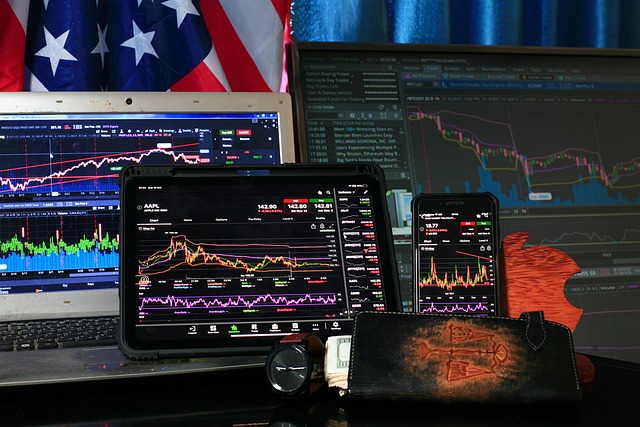Synthetix USD stablecoin loses dollar peg, drops to 5-year low of $0.83
The Synthetix protocol’s native stablecoin, Synthetix USD (sUSD), fell to its lowest value in five years, extending a months-long struggle to maintain its $1 peg.The asset has faced persistent instability since the start of 2025. On Jan. 1, sUSD dropped to $0.96 and only rebounded to $0.99 in early February. Prices continued to fluctuate through February before stabilizing in March.On April 10, sUSD fell to a five-year low of $0.83, according to data from CoinGecko.SUSD is a crypto-collateralized stablecoin. Users lock up SNX tokens to mint sUSD, making its stability highly dependent on the market value of SNX.1-month price chart of Synthetix USD stablecoin. Source: CoinGeckoSynthetix USD’s “death spiral” risksWhen the sUSD token dropped to $0.91 on April 1, Rob Schmitt, the co-founder of the risk tokenization platform Cork Protocol, explained the potential “death spiral scenario” of the stablecoin. Schmitt said the stablecoin’s design shares similarities with Terra’s TerraUSD (UST) stablecoin, which collapsed in 2022. While he noted key differences in collateralization and debt management, Schmitt said the fundamental risk remains:“The death spiral scenario remains the same though, if the value of SNX drops sufficiently, sUSD is no longer fully backed. If fear of sUSD being unbacked triggers users to redeem sUSD for SNX and sell this, it creates further downwards pressure on SNX, creating a cascading deleveraging event.”Despite the concern, Schmitt emphasized that such a collapse is unlikely due to Synthetix’s $30 million treasury, which holds about half of the outstanding sUSD debt. He said this reserve could be deployed against a spiral scenario.“The biggest factor why sUSD won’t death spiral is because the Synthetix treasury hodls about $30 million of sUSD, which is about half the outstanding debt. To avoid a death spiral, this sUSD can be unwound,” Schmitt wrote. Synthetix founder Kain Warwick previously responded to the dips, saying that while he had feared a death spiral during the last seven years, he sleeps “great” these days. He explained that the dips happened because the primary driver of sUSD buying had been removed. “New mechanisms are being introduced but in this transition there will be some volatility,” Warwick wrote. The Synthetix founder added that since sUSD is a pure crypto collateralized stablecoin, the peg can drift. However, the executive said there are mechanisms to push it back in line if it goes above or below its peg. “These mechanisms are being transitioned right now, hence the drift,” Warwick added. Cointelegraph approached Warwick for further comment but had not heard back by publication. Related: Ukraine floats 23% tax on some crypto income, exemptions for stablecoinsStablecoin loses dollar peg amid market sell-offApart from sUSD, another stablecoin has also recently strayed from its dollar pegs as the crypto market has seen downturns. On April 7, Synnax Stablecoin (syUSD) dropped to $0.94. The project said concentrated sell activities temporarily caused a “slight deviation” from its dollar peg. The project said it was working on implementing a fully open redemption system. Magazine: 3 reasons Ethereum could turn a corner: Kain Warwick, X Hall of Flame
Jack Dorsey pushes Signal to adopt Bitcoin payments
Jack Dorsey, a cryptocurrency entrepreneur and former Twitter CEO, is encouraging Signal Messenger to integrate Bitcoin for peer-to-peer (P2P) payments, a move that could shift the platform’s crypto strategy away from altcoins.“Signal should use Bitcoin for P2P payments,” Dorsey wrote on X on April 9, replying to a post by Bitcoin developer Calle, who suggested that Bitcoin (BTC) would be a perfect fit for Signal’s private communication channel.Source: Jack DorseyDorsey’s call to action was echoed by other industry leaders, including former PayPal president David Marcus, who wrote that “all non-transactional apps should connect to Bitcoin.”The endorsements reflect a growing push to promote Bitcoin as a functional payment system rather than just digital gold or a pure store of value, which alone — according to Dorsey — won’t ensure the success of BTC.Signal offers payments with Sentz, formerly MobileCoinFounded in 2014, Signal is an open-source, encrypted messaging service for instant messaging, voice calls and video calls.The messenger currently offers in-app payments in MobileCoin (MTCN), a privacy-focused ERC-20 token, which rebranded to Sentz in November 2023.Signal’s website mentions the old name of Sentz (MobileCoin) as the only supported cryptocurrency within the messenger. Source: SignalBacked by high-profile industry players like BlockTower Capital and Coinbase Ventures, Sentz was founded in 2017 by Josh Goldbard and Shane Glyn to enable a “fast, private, and easy-to-use cryptocurrency.”Related: Kraken taps Mastercard to launch crypto debit cards in Europe, UKSignal came under fire over its MobileCoin integration in 2021, with many raising concerns over potential ties between Signal’s founder and MTCN, opacity around its issuance and suspicious gains leading up to the partnership’s announcement.Cointelegraph reached out to Signal regarding potential plans to integrate Bitcoin but had not received a response as of publication.Social media apps historically pushed altcoinsSignal is far from being alone in pushing altcoin payments instead of offering its users payments in Bitcoin, which is designed for P2P payments as its core use case, according to its anonymous creator, Satoshi Nakamoto.Although former PayPal president Marcus is now advocating for Bitcoin usage by all non-transactional apps, he previously led Meta’s (formerly Facebook) project developing the firm’s own payment cryptocurrency, initially known as Libra, which eventually failed.Source: DogeDesignerTelegram, another messenger popular in the community, has also been aggressively pushing its ecosystem to use Toncoin (TON), a crypto asset linked to Telegram founders, though not technically managed by Telegram.Elon Musk’s “everything app” X has also been suspected of planning to launch its own coin for a long time, but Musk publicly denied that in August 2023.Magazine: 3 reasons Ethereum could turn a corner: Kain Warwick, X Hall of Flame
How USDT mints and burns move with Bitcoin price cycles
Over the past decade, issuance of Tether’s USDt (USDT) has consistently mirrored Bitcoin (BTC) price cycles, with mints often clustering around bull runs and burns following corrections.Data from Whale Alert shows the relation between USDT issuance and Bitcoin price movements by plotting Tether’s net minting and burning alongside the price of Bitcoin from 2015 to early 2025. While many in the industry have long speculated about the correlation between USDT supply and BTC performance, this data set provides a clearer timeline for evaluating that relationship.Tether’s USDT, the world’s largest stablecoin with over $144 billion in market capitalization, has become a key liquidity vehicle in crypto markets and is often viewed as a proxy for broader capital inflows. The data from Whale Alert reinforces how tightly its issuance patterns track with Bitcoin’s price cycles, though the direction of causality remains up for debate.Large issuances of USDT coincide with Bitcoin price spikes. Source: Whale AlertAccording to crypto analyst and researcher Mads Eberhardt, a greater supply of stablecoins — including Tether — has historically correlated with positive performance in crypto markets. This relationship is also evident when looking at Tether’s mint and burn chart over time.“However, it’s important to note that we have not observed this correlation over the past few months,” Eberhardt said. “I expect that as stablecoins see increasing adoption in non-native crypto use cases, this correlation will gradually weaken over time.”USDT issuance and Bitcoin price spikesWhale Alert’s data shows a consistent pattern of periods of aggressive USDT minting frequently coinciding with or closely preceding major Bitcoin bull runs. This was also apparent in late 2020 and throughout 2024 when net new USDT issuance climbed into the tens of billions as Bitcoin’s price accelerated upward.A series of large USDT mints in late October and November 2024 accompanied Bitcoin’s rise from $66,700 to over $106,000. Source: Whale AlertIn a more recent example, Bitcoin went on a bull run from $66,700 on Oct. 25, 2024, to over $106,000 on Dec. 16. The first significant mint in this cycle was a $1-billion issuance at the end of BTC’s trip to $72,000 on Oct. 30, before a short-lived correction. Bitcoin had another climb from $65,000 to $75,000, with another $6 billion minted at the end of this rally on Nov. 6. Bitcoin posted moderate gains over the next three days, during which Tether minted an additional $6 billion in two batches. This was followed by a sharp rally that pushed Bitcoin to $88,000.A mint of $6 billion on Nov. 18 marked the beginning of Bitcoin’s next leg up, kicking off a rally that pushed the price to just under $99,000 by Nov. 22. In the same stretch, Tether issued another $9 billion in three separate batches. Another mint of $7 billion on Nov. 23 came just before a brief pullback and Bitcoin’s ultimate surge to $106,000 by Dec. 17.The timing of USDT mints in late 2024 suggests that issuance can serve as a near-term signal of rising demand — but not necessarily as a pure leading indicator.With USDT now over a decade old since its 2014 launch, its role in Bitcoin price cycles is dwindling, Ki Young Ju, CEO of blockchain analytics firm CryptoQuant, told Cointelegraph.“Most of the new liquidity entering the Bitcoin market today is coming through MSTR and [exchange-traded funds], primarily via Coinbase’s BTC/USD market or [over-the-counter] desks. Stablecoins are no longer an important signal for determining Bitcoin’s market direction,” Ju said.“In fact, the total amount of stablecoins held on exchanges is lower than it was during the 2021 bull market,” he added.Total stablecoins held on exchanges today is lower than it was during the 2021 bull market. Source: CryptoQuantIn many of the observed cases, the largest mints occurred during or after price momentum was already underway. For example, the $6-billion mint on Nov. 6 came after Bitcoin had already rebounded from $65,000 to $75,000. Similarly, more than $15 billion in USDT was minted between Nov. 18 and 23 amid rapid upward price action rather than ahead of it.That said, there are several notable exceptions. A pair of mints totaling $7 billion around Nov. 13 and the $7 billion minted on Nov. 23 appeared shortly before fresh rallies, indicating that in some cases, large issuances may anticipate or help catalyze further price movement.“These days, most newly issued stablecoin liquidity is either for global trade settlements or represents profits from Bitcoin’s rise being converted into liquid form, which increases market cap — not necessarily fresh inflows,” Ju said.Related: Trump ‘Liberation Day’ tariffs create chaos in markets, recession concernsUSDT burns and lag behind Bitcoin correctionsConversely, periods of sustained USDT burns — when USDT is removed from circulation — often occur during or shortly after market corrections. This pattern suggests that redemptions tend to follow price pullbacks.This was visible in the weeks after Bitcoin’s December 2024 peak above $106,000. As BTC declined through January and into March 2025, several red bars — representing USDT burns — appeared on the chart.Dec. 26, 2024: A major USDT burn of $3.67 billion occurs just after Bitcoin drops from around $106,000 to $95,713.Dec. 30, 2025: A smaller burn of $2 billion follows as Bitcoin continues to decline toward the $92,000 level. Jan. 10, 2025: A $2.5-billion USDT mint occurs before Bitcoin rebounds to over $106,000.Feb. 28: Another $2 billion in USDT is burned following a month-long decline from Bitcoin’s six-digit peaks to around $84,000.Unlike mints, burns rarely precede downward moves in the same way that some mints appear in front-run rallies. Instead, they tend to confirm what’s already underway. This makes them useful for tracking post-peak behavior and assessing the scale of market cooling, rather than identifying tops in real time.Such patterns are observed throughout USDT’s existence, including a record-breaking $20-billion USDT burn on June 20, 2022, when Bitcoin tumbled from over $65,000 to around $21,000.However, experts agree that burns don’t offer definite post-peak signals: “Currently, we have no evidence of a correlation between burns and market tops, nor as a lagging indicator,” Jos Lazet, founder and CEO of asset management firm Blockrise, told Cointelegraph.Shifting stablecoin landscape impacting the USDT and Bitcoin relationshipWhile historical data shows a clear relationship between USDT supply changes and Bitcoin price movements, there are several factors that impact the price of Bitcoin, and the industry has yet to find concrete evidence that suggests USDT issuance directly influences the price of Bitcoin, or if they flow directly into Bitcoin.“It is not feasible to relate USDT supply (or minting) to a specific trading volume, as the majority of the trading against stablecoins happens on centralized exchanges, especially relating to Bitcoin,” Lazet said.“What can be easily seen is that the (far) majority of the trading volume relates to Bitcoin, and similarly the Bitcoin trading volume is largely done against USDT. However it (probably) won’t be feasible to directly correlate these events.”While the connection between USDT issuance and Bitcoin price action remains debated, external forces could soon reshape how stablecoins interact with crypto markets. The Markets in Crypto Assets (MiCA) framework places new compliance requirements on stablecoin issuers operating within the European Union. As a result, several exchanges have announced the delisting of USDT from their platforms. In the US, the proposed legislation could also reshape how centralized stablecoins like USDT are issued, backed and redeemed. Increased regulatory scrutiny may reduce the flexibility and responsiveness of issuers or prompt a shift toward more compliant alternatives.Related: Stablecoin adoption grows with new US bills, Japan’s open approachAt the same time, competition is intensifying. Rivals like USDC (USDC), with a strong compliance posture, are gaining ground, especially among institutions. USDC lost a chunk of its market cap in 2022 and 2023 following the Silicon Valley Bank debacle, dropping from around $56 billion to around $24 billion. Since then, it has recovered to an all-time high market capitalization of over $60 billion at time of writing.USDC market capitalization has recovered to an all-time high. Source: CoinGeckoMeanwhile, decentralized stablecoins such as Dai (DAI) are appealing to decentralized finance-native users who prioritize censorship resistance and onchain transparency.Tether’s influence on Bitcoin and the broader crypto market remains significant. But whether USDT mints and burns will continue to serve as reliable indicators of capital flow in the coming years will be influenced by how regulatory forces, user preferences and infrastructure developments reshape the stablecoin landscape.Magazine: New ‘MemeStrategy’ Bitcoin firm by 9GAG, jailed CEO’s $3.5M bonus: Asia Express
Bybit recovers market share to 7% after $1.4B hack
Bybit’s market share has rebounded to pre-hack levels following a $1.4 billion exploit in February, as the crypto exchange implements tighter security and improves liquidity options for retail traders.The crypto industry was rocked by its largest hack in history on Feb. 21 when Bybit lost over $1.4 billion in liquid-staked Ether (stETH), Mantle Staked ETH (mETH) and other digital assets.Despite the scale of the exploit, Bybit has steadily regained market share, according to an April 9 report by crypto analytics firm Block Scholes.“Since this initial decline, Bybit has steadily regained market share as it works to repair sentiment and as volumes return to the exchange,” the report stated.Block Scholes said Bybit’s proportional share rose from a post-hack low of 4% to about 7%, reflecting a strong and stable recovery in spot market activity and trading volumes.Bybit’s spot volume market share as a proportion of the market share of the top 20 CEXs. Source: Block ScholesThe hack occurred amid a “broader trend of macro de-risking that began prior to the event,” which signals that Bybit’s initial decline in trading volume was not solely due to the exploit.Related: Can Ether recover above $3K after Bybit’s massive $1.4B hack?It took the Bybit hackers 10 days to launder all the stolen Bybit funds through the decentralized crosschain protocol THORChain, Cointelegraph reported on March 4.Source: Ben ZhouDespite efforts, 89% of the stolen $1.4 billion was traceable by blockchain analytics experts.Related: THORChain generates $5M in fees, $5.4B in volume since Bybit hackLazarus Group’s 2024 pause was repositioning for Bybit hackBlockchain security firms, including Arkham Intelligence, have identified North Korea’s Lazarus Group as the likely culprit behind the Bybit exploit, as the attackers have continued swapping the funds in an effort to render them untraceable.Illicit activity tied to North Korean cyber actors declined after July 1, 2024, despite a surge in attacks earlier that year, according to blockchain analytics firm Chainalysis.The slowdown in crypto hacks by North Korean agents had raised significant red flags, according to Eric Jardine, Chainalysis cybercrimes research Lead.North Korean hacking activity before and after July 1. Source: ChainalysisNorth Korea’s slowdown “started when Russia and DPRK [North Korea] met for their summit that led to a reallocation of North Korean resources, including military personnel to the war in Ukraine,” Jardine told Cointelegraph during the Chainreaction show on March 26, adding:“So, we speculated in the report that there might have been additional things unseen in terms of resources reallocation from the DPRK, and then you roll forward into early February, and you have the Bybit hack.”https://t.co/jOlqMt4Hag— Cointelegraph (@Cointelegraph) March 26, 2025The Bybit attack highlights that even centralized exchanges with strong security measures remain vulnerable to sophisticated cyberattacks, analysts said.The attack shares similarities with the $230 million WazirX hack and the $58 million Radiant Capital hack, according to Meir Dolev, co-founder and chief technical officer at Cyvers.Magazine: Trump’s crypto ventures raise conflict of interest, insider trading questions
OpenSea urges SEC to exclude NFT marketplaces from regulator’s remit
Non-fungible token marketplace OpenSea has urged the US Securities and Exchange Commission to exclude NFT marketplaces from regulation under federal securities laws.The SEC needs to “clearly state that NFT marketplaces like OpenSea do not qualify as exchanges under federal securities laws,” OpenSea general counsel Adele Faure and deputy general counsel Laura Brookover said in an April 9 letter to Commissioner Hester Peirce, who leads the agency’s Crypto Task Force.Faure and Brookover argued that NFT marketplaces don’t meet the legal definition of an exchange under US securities laws as they don’t execute transactions, act as intermediaries or bring together multiple sellers for the same asset.“The Commission’s past enforcement agenda has created uncertainty. We therefore urge the Commission to remove this uncertainty and protect the ability of US technology companies to lead in this space,” Faure and Brookover wrote.OpenSea’s legal team has asked the SEC to issue informal guidance on NFT Marketplaces. Source: SEC“In preparing this guidance, the Crypto Task Force should specifically address the application of exchange regulations to marketplaces for non-fungible assets, similar to the recent staff statements on memecoins and stablecoins,” Faure and Brookover added. Under a notice published on April 4, the SEC said stablecoins that meet specific criteria are considered “non-securities” and are exempt from transaction reporting requirements.Meanwhile, the SEC’s division of corporation finance said in a Feb. 27 staff statement that memecoins are not securities under the federal securities laws but are more akin to collectibles.NFT marketplaces don’t fit broker definition, says OpenSeaFaure and Brookover argued the Crypto Task Force should also exempt NFT marketplaces like OpenSea from having to register as a broker, arguing they don’t give investment advice, execute transactions, or custody customer assets.“We ask the SEC to clear the existing industry confusion on this issue by publishing informal guidance. In the longer term, we invite the Commission to exempt NFT marketplaces like OpenSea from proposed broker regulation,” they said.Related: OpenSea pauses airdrop reward system after user backlashUnder the Trump administration, the SEC has slowly been walking back its hardline stance toward crypto forged under former Chair Gary Gensler.The regulator has dismissed a number of enforcement actions it previously launched against crypto firms and has dropped probes into crypto companies over alleged securities law violations, including one into OpenSea.Magazine: Trump-Biden bet led to obsession with ‘idiotic’ NFTs —Batsoupyum, NFT Collector
Crypto stocks see big gains alongside US stock market rebound
Crypto stocks have surged as part of a broader recovery in the US stock market on April 9 following President Donald Trump’s 90-day pause on sweeping global tariffs.The Wednesday, April 9 trading day closed with Michael Saylor’s Strategy up 24.76% to $296.86, while crypto exchange Coinbase (COIN) closed up 17% to $177.09, according to Google Finance data.Crypto mining companies also saw gains, with MARA Holdings (MARA) up 17%, Cipher Platforms (CIFR) up 16.59%, and Riot Platforms (RIOT) rising 12.77%.Michael Saylor’s Strategy, formerly known as MicroStrategy, surged 24.76% during the trading day. Source: Google FinanceMost of the gains in crypto stocks and the broader US market came in the final three hours of the day’s trading session, spurred by an afternoon post from Trump on his social media platform, Truth Social. In the post, Trump announced a 90-day pause on his global “reciprocal tariffs,” instead lowering the tariff rate to 10% on every country besides China, which he increased to 125% due to the country’s counter-tariffs against the US.The S&P 500, which tracks the 500 largest public US companies, closed 9.52% higher, its third-largest single-day gain since World War II, according to reports. Meanwhile, the Nasdaq 100 posted a 12.02% gain over the trading day.APAC markets and Bitcoin see gainsAsia Pacific markets saw an uptick as trading began on Thursday, April 10, local time. Australia’s ASX 200 index is up 4.55% at the time of writing, while Japan’s Nikkei 225 opened the trading day almost 10% higher.Related: Bitcoin, stocks crumble after ’90 day tariff pause’ deemed fake news — BTC whales keep accumulatingAlthough Trump’s initial mention of tariffs in early February shook the markets and was a key catalyst in Bitcoin dropping below the $100,000 price level, it was his major escalation in early April that triggered significant volatility across the markets.On April 4, the US stock market lost $3.25 trillion — around $570 billion more than the entire crypto market’s $2.68 trillion valuation at the time of publication. It came only two days after Trump signed an executive order establishing reciprocal tariffs on trading partners and a 10% baseline tariff on all imports from all countries.Meanwhile, Bitcoin (BTC) has also experienced an uptrend. At the time of publication, Bitcoin is trading 7.52% higher than 24 hours ago, at $82,065, according to CoinMarketCap data.Magazine: 3 reasons Ethereum could turn a corner: Kain Warwick, X Hall of FlameThis article does not contain investment advice or recommendations. Every investment and trading move involves risk, and readers should conduct their own research when making a decision.
Bitwise doubles down on $200K Bitcoin price prediction amid trade tension
Institutional crypto investment firm Bitwise has doubled down on its big Bitcoin price prediction for this year despite escalating global trade tensions.“In December, Bitwise predicted that Bitcoin would end the year at $200,000. I still think that’s in play,” Bitwise chief investment officer Matt Hougan said in an April 9 blog post. He suggested that the fallout from US President Donald Trump’s global tariff push could be beneficial for Bitcoin (BTC) and crypto because his administration “wants a weaker dollar, even if it means ending its role as the world’s reserve currency.”Hougan cited an April 7 speech by Steve Miran, chairman of the White House Council of Economic Advisers, which criticized the dollar’s reserve status as causing “persistent currency distortions” and “unsustainable trade deficits” that have “decimated” US manufacturing.Hougan said a weaker greenback could have both short-term and long-term implications for Bitcoin. In the short term, dollar weakness historically correlates with Bitcoin strength, he added, citing the US Dollar Index (DXY). “Dollar down equals Bitcoin up,” Hougan said. “I expect this pattern will continue.”BTC prices have generally been historically high when DXY has been historically low. Source: MacroMicro The DXY, which compares the value of the US dollar to a basket of six major currencies, has fallen more than 7% since the beginning of 2025, according to TradingView. In the long term, Hougan said disruption to the global reserve currency system creates opportunities for alternative reserve assets, including Bitcoin and gold. “Governments and companies turn to the dollar for international trade precisely because of its stability. When that stability comes into question, they have to look elsewhere.”The Bitwise executive concluded that the world will move from a single reserve currency to a “more fractured reserve system, with hard money like Bitcoin and gold playing a bigger role than it does today.”Earlier this week, VanEck said that China and Russia were reportedly settling some energy trades in Bitcoin as Trump’s trade war ramps up.On April 9, Trump issued a 90-day pause on nearly all of his earlier announced “reciprocal tariffs,” keeping a baseline 10% tariff on all countries besides China, which he lumped with a 125% tariff.Bitcoin will be the fastest horse Crypto trader and analyst Will Clemente said on X that “Bitcoin will be the fastest horse” coming out of this drawdown. Related: Most opportune time to buy Bitcoin? Now — Bitwise CIO Matt Hougan explains why“It’s a pure reflection of liquidity and no earnings, if anything, economic uncertainty/deglobalization are positive for Bitcoin,” he added. BTC is up 7.5% over the past 24 hours to $81,700. It has seen a correction of around 32% from its Jan. 20 all-time high, in line with pullbacks in previous bull market cycles.Magazine: 3 reasons Ethereum could turn a corner: Kain Warwick, X Hall of Flame
81.6% of XRP supply is in profit, but traders in Korea are turning bearish — Here is why
XRP has struggled to find sustained bullish momentum since reaching its cycle peak at $3.40 on Jan. 16, 2025. XRP (XRP) dropped as much as 46% over the past three months, but despite its recent drawdown, Glassnode data indicates that 81.6% of XRP’s current circulating supply remains in profit. While the profit supply percentage is down from its year-to-date high of 92%, the data set highlighted the retention value for holders despite the recent corrections. Percentage Supply in Profit for XRP, BTC, SOL ETH, TRX. Source: X.comCurrently, only Tron (TRX) has a higher profitable supply with 84.6%, while Bitcoin (BTC), Ether (ETH) and Solana (SOL) exhibited 76.8%, 44.9% and 31.6%, respectively.Analyst says Korean XRP traders are bearishData shows traders in Korea played a significant role in buying the first XRP dip below $2 on Feb. 3. Investors on Upbit and Bybit exchange filled their bids below $2, pushing the altcoin’s value back to $2.89 on Feb. 13. However, the sentiment has flipped over the past few days. Anonymous market analyst Dom pointed out that Korean traders executed 1.4 million trades on the XRP/KRW pair, with 62% being sell orders, resulting in a net sale of $120 million in XRP between April 6-7. XRP selling on Korean markets. Source: X.comThe data follows a trend of heavy selling from long-term whales and new investors as “retail confidence” in XRP continues to slip. Last week, Cointelegraph reported over $1 billion in positions being offloaded at an average price of $2.10Related: XRP price gains 13% after Trump 90-day tariff pause and XXRP ETF launchXRP’s higher time frame (HTF) chart lost its $2 support, dropping to a new yearly low of $1.61 on April 7, but the altcoin managed to reclaim this critical level on April 9. Even if XRP holds the $2 level, the price reflects a bearish market structure on multiple time frames. XRP 1-day chart. Source: Cointelegraph/TradingViewAs illustrated in the chart, XRP will potentially close a daily candle below its 200-day moving average (orange line), leading to a prolonged correction period over the next few weeks. The key demand zone remains between $1.63 and $1.27 (blue box), where a period of accumulation might unfold for the altcoin. Related: Ripple acquires crypto-friendly prime broker Hidden Road for $1.25BThis article does not contain investment advice or recommendations. Every investment and trading move involves risk, and readers should conduct their own research when making a decision.





